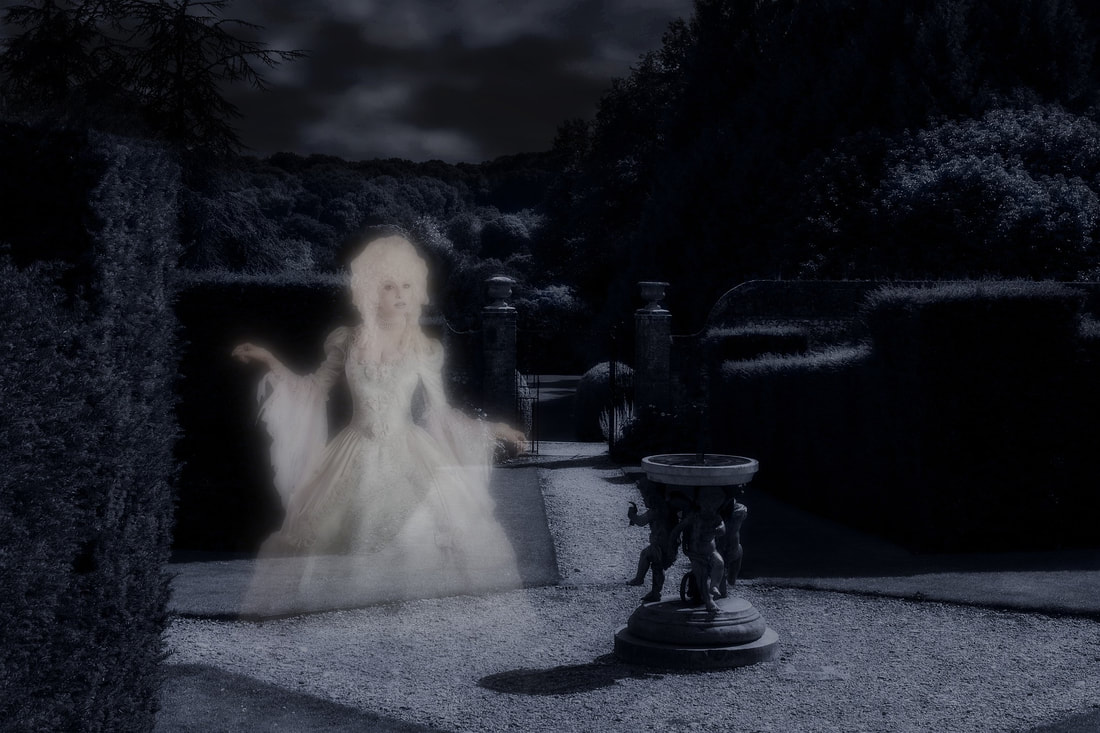 Image by ariadne-a-mazed from Pixabay Samhain (pronounced sow-in, as in rhymes with “cow in”) is an ancient Celtic festival marking the end of the harvest season and the beginning of winter. It takes place on October 31 and is the source of many of our Halloween traditions. Why are ghosts a typical symbol of Halloween? That's because the ancient Celts believed that the division between the realms of the living and the dead was thinnest at Samhain, which would allow the souls of the dead to pass through. Our ancestors built bonfires and offered food to honor their dead loved ones during this festival. They also dressed up in animal skins to chase harmful spirits away. Maybe this is why ghosts found their way into many Irish, Scottish, and English folk songs, which then crossed the Atlantic and inspired American versions. She Moved Through the Fair lyrics by Padraic Collum My young love said to me, "My mother won't mind And my father won't slight you for your lack of kind" And she stepped away from me and this she did say: It will not be long, love, till our wedding day" As she stepped away from me and she moved through the fair And fondly I watched her move here and move there And then she turned homeward with one star awake Like the swan in the evening moves over the lake The people were saying, no two e'er were wed But one had a sorrow that never was said And I smiled as she passed with her goods and her gear, And that was the last that I saw of my dear. Last night she came to me, my dead love came in So softly she came that her feet made no din As she laid her hand on me and this she did say "It will not be long, love, 'til our wedding day" The Unquiet Grave (sometimes called Cold Blows the Wind) Cold blows the wind to my true love and gently drops the rain I only had but one true love and in greenwood she lies slain I'll do as much for my true love as any young man may I'll sit and mourn along her grave for a twelve-month and a day When the twelve months and one day was past the ghost began to speak: "Why sit thou'st here along my grave and will not let me sleep?" "There's one thing that I want sweetheart, there's one thing that I crave And that is a kiss from your lily white lips then I'll go from your grave" "My lips they are as cold as clay my breath smells earthy strong And if you kiss my cold clay lips your days they won't be long Go fetch me water from the desert and blood from out of stone Go fetch me milk from a fair maid's breast that a young man never had known" 'Twas down in Cupid's Garden where you and I would walk The finest flower that ever I saw is withered to a stalk The stalk is withered and dry sweetheart the flower will ne'er return And since I lost my one true love what can I do but mourn? "When shall we meet again sweetheart? When shall we meet again?" "Ere the oaken leaves that fall from the trees are green and spring up again"
0 Comments
Many of us know of The Clancy Brothers and Tommy Makem, but have you ever heard their story? It’s a quite a tale. And it all starts with two Irish brothers seeking their fortunes in New York City. Paddy and Tom Clancy didn’t mean to start a worldwide movement when they arrived in New York in 1951. They just wanted to be actors. And so they were, landing some roles on and off Broadway and on television. Creative and ambitious, they even started their own company, Trio Productions, and rented a theater to produce Irish plays. But that’s an expensive endeavor. So they needed to raise some money. What could they do? How about sing the old songs they learned as kids back in County Tipperary? They gathered some friends and called it the Swapping Song Fair. Soon musicians well-known in the American Folk Revival - Pete Seeger, Woody Guthrie, and Jean Ritchie - were joining in. Sometime in 1955, the Clancys met folk music collector Diane Hamilton in New York. When they heard she planned to travel to Ireland to record rare Irish songs, they recommended she stop by their parents’ house in Carrick-on-Suir. She took them up on it. At the Clancy’s she recorded songs sung by members of the family including the youngest brother Liam. Her next stop would be the home of Sarah Makem in County Armagh, Northern Ireland. She invited Liam to join her on the trip. That’s where Liam met Sarah’s son Tommy, which started a lifelong and productive friendship. The Band of Brothers Grows By 1956, Liam and Tommy were also in New York looking for acting jobs and singing on the side with the older Clancys. Later that year Paddy, Tom, and Liam Clancy, along with Tommy Makem recorded a collection of Irish rebel songs called The Rising of the Moon. This first album won local success and helped launch Paddy’s new company, Tradition Records. Still focused on their acting careers, it surprised them when more and more singing gigs rolled in. In 1959, they recorded their second album, this one drinking songs called Come Fill Your Glass With Us. By this time Liam had honed his guitar skills and Tommy had added his tin whistle and uilleann pipes. This album was a hit and launched them into bigger performances in New York, Boston, and Chicago. Still their group had no actual name. They tossed around several ideas but couldn’t agree. A nightclub owner finally settled that question. He needed something to put on the marquee. So he decided to call them The Clancy Brothers and Tommy Makem. Meanwhile back home in Tipperary, Mrs. Clancy read an article about the freezing wind, snow, and icy conditions in New York and knitted the boys cozy Aran sweaters. They bundled up in them one frosty night before going out to a gig. When he saw the sweaters, their manager went wild. That was just the look he was looking for! And that is why they wore those same sweaters to their famous appearance on the Ed Sullivan Show on March 12, 1961, before an audience of 40 million viewers. After that night, the musical career of The Clancy Brothers and Tommy Makem (and Aran sweater sales) took off. Soon they had a five-year contract with Columbia Records, a $100,000 advance, and a new record called A Spontaneous Performance Recording. To top it off, Pete Seeger joined them on banjo. This album earned a Grammy nomination for Best Folk Recording in 1962. The singing Irishmen appeared on major radio and television talk-shows and even played an acclaimed concert at Carnegie Hall. In 1962 they toured around the world including Ireland, England, Canada and Australia. And they played for President John F. Kennedy in 1963. Their fame and success endured throughout the 1960s because their timing fit in with the American Folk Music Revival. The trend had started in the 1930s and ‘40s with artists like Pete Seeger and Woody Gutherie. It later included performers like Peter, Paul and Mary, Joan Baez, and Bob Dylan. The Clancy Influence Dylan, who spent a lot of time with the Clancys in New York in the early ‘60s, said, “Irish music has always been a great part of my life because I used to hang out with the Clancy Brothers. They influenced me tremendously.” All the great bands we love to hear at Irish festivals today have The Clancy Brothers and Tommy Makem to thank for the popularity of the genre. Irish author Frank McCourt wrote in 1999, “They were the first. Before them there were dance bands and show bands and céilidhe bands...but not since John McCormack had Irish singers captured international attention like the Clancy Brothers and Tommy Makem. They opened the gates to the likes of the Dubliners and the Wolfe Tones and every Irish group thereafter.” Tommy Makem left the Clancys in 1969 to pursue a solo career. The Clancy brothers continued to perform and record albums in various combinations of family members and friends. Later in the mid-70s, Liam Clancy and Tommy Makem teamed up and performed together for 13 years. Now their sons keep the music going into the second generation. Finbarr Clancy (Bobby’s son) is a member of The High Kings. Dónal Clancy (Liam’s son) is a former member of Danú and Solás and now performs solo. Rory Makem (Tommy Makem’s son) is a solo performer who often teams up with Dónal Clancy too. All this history behind Rory Makem makes his upcoming concert at Five Points Public House in Utica a significant opportunity for traditional Irish music fans. It takes place March 19th at 7:00pm with doors opening at 6:00pm, and you can get your tickets right here. Rory played at Five Points Public House with Dónal Clancy last fall. He’s an amazing performer and storyteller on top of being a brilliant musician. Here’s a sample of his music: The Great American Irish Festival is always a magnificent celebration of culture, music, community, and friendship. And this year was just as epic as ever. Held July 26-28 at the Herkimer County Fairgrounds in Frankfort, NY, it featured 22 bands, a building full of high quality vendors, food and drink galore, heavy games, a 5K race, Irish step dancers, dogs of Ireland, highland pipe bands - and a building full of cultural exhibits and activities which was organized by Craobh Dugan members this year. In this post you'll get a taste of the action, with lots of photos and videos. Several members of our group researched and created display boards for the mini-musem exhibit, covering topics like Irish poets, influential local immigrants from Ireland, Gaelic sports, the Irish workers on the Erie Canal, noble Irish women, and political cartoons that showed some of the fierce prejudice that Irish people had to overcome in the 18th and 19th centuries. 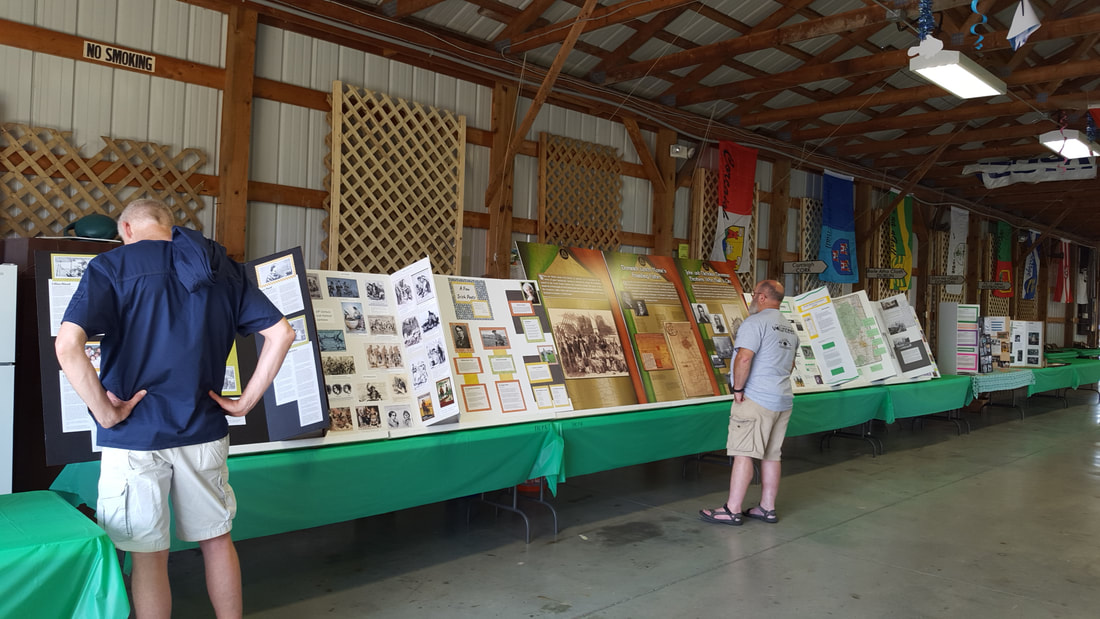 Patty Foley created a display about Irish knitting stitches and demonstrated them to festival visitors. Mike Carroll organized some of his Little Falls Theater friends to perform a traditional medieval mummers' play several times throughout the festival. Naming themselves Mummers Along the Mohawk, they created their costumes and recited their rhyming lines with great theatrical zeal, surprising and amazing all who saw them. Cindy Wood spoke to festival-goers interested in their Irish ancestry, sharing ideas for genealogical research. 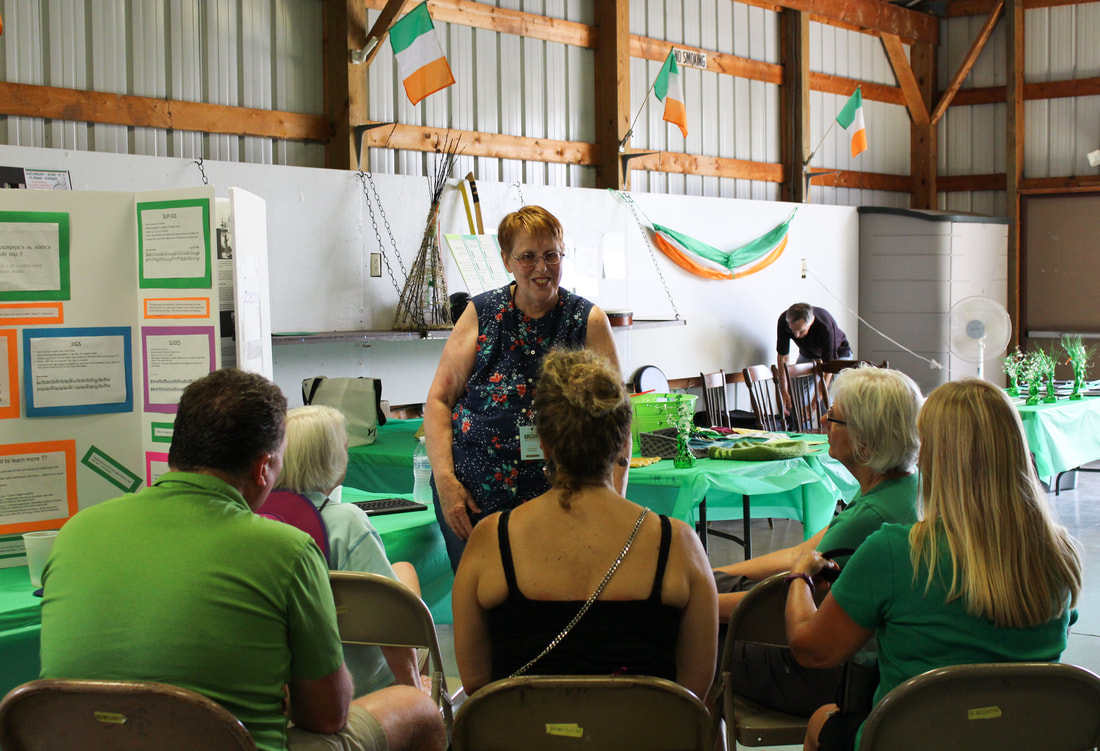 Albany's Two Rivers Gaelic League translated our names into Irish so we could wear them proudly on our own name tags. Connie Pratt, owner of Art and Vine in Utica, led a Paint and Sip session where more than 20 people created lovely pieces of art. One young girl even used her painting as a place to gather autographs from many of the musicians. The open session on Saturday sounded amazing with several professional musicians playing with us this year. With just a simple, "Would you like to join us?" these very busy artists were more than happy to play music with their local fans. Playing in the session were: Rose Baldino of House of Hamill, The Byrne Brothers, and Arise and Go. Have a listen to this small sample: We also tried another kind of session, this one just for drums. Tapping into a little experience with drum circles, Sue Romero led a bodhrán drum circle for about a dozen people. They brought their bodhráns, djembes, and congas and learned about the health benefits of drumming, drum circle rhythms and Irish beats. Jim O'Rourke contributed many things to our festival efforts this year, including this demonstration of how a thatch roof works. A few flash mobs surprised and delighted shoppers in the vendor building thanks to the guidance of Jim O'Rourke and the teachers of Butler-Sheehan Academy of Irish Dance and the Johnston School of Irish Dance. Here's a video of the Johnston School's flash mob on Sunday. Limerick native Deirdre McCarthy with her husband Jim gave a musical and storytelling performance. And then Deirdre taught us some fun sean-nos dance steps. 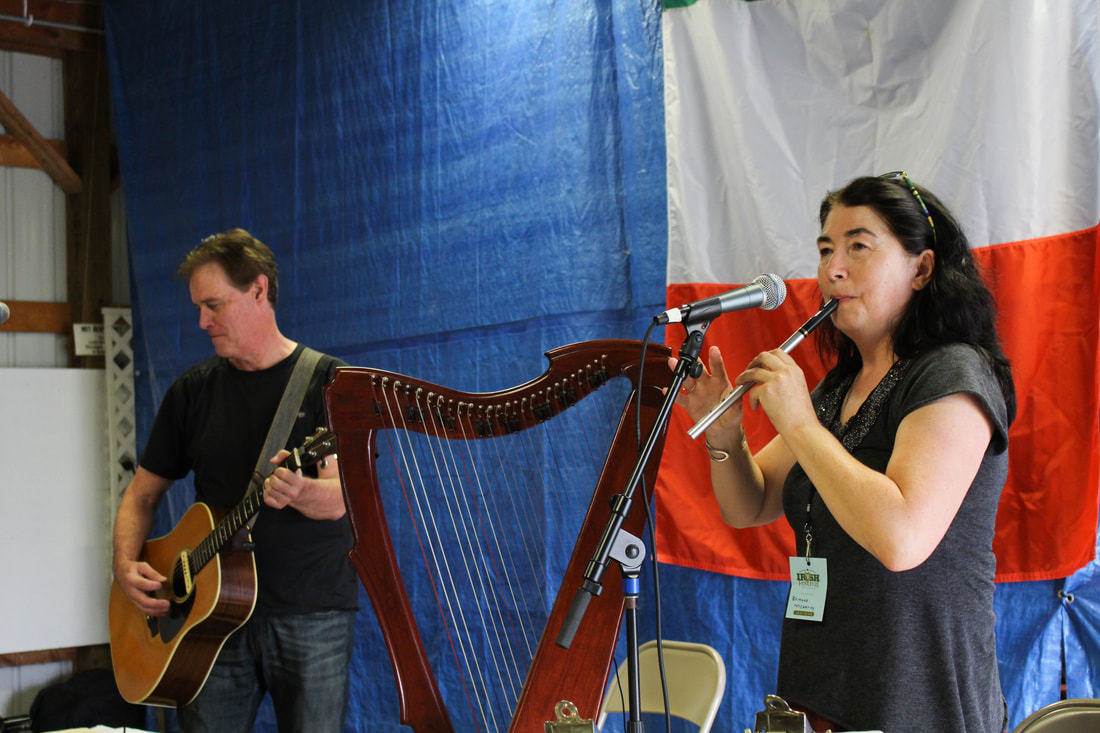 The Cultural Building stage was a busy place. Pictured here, The Mighty Craic performs. Later in the festival Gerry Dixon and Donal O'Shaughnessy also played music and told entertaining stories, and Craobh Dugan performed our Irish and the Erie musical-historical program. We also performed tunes and songs on the Traditional Stage on Sunday. This is a long list of highlights, but there were even more! We had five entries to the photo contest, which was won by Terry Ann DeLude from Utica. Her black and white photo, number 2 in the photo below, received more than 50 votes. And 26 people bravely attempted our challenging trivia quiz. Only one person, Carl Finnerty who traveled from Pennsylvania for the festival, answered all the questions correctly and won the Irish blessing throw donated by Lennon's Irish Shop.
All told, it was a fun and fulfilling weekend made possible only by the collaboration and hard work of our dedicated volunteers and the many more volunteers who make the Great American Irish Festival happen, now for the 16th year. Thanks a million to everyone who pitched in planning, creating, performing, presenting, selling raffle tickets, taking photos and videos, setting up, and cleaning up! It was a weekend where memories were made for us and for hundreds of people who attended.
Imagine you're a local musician who plays for fun and friendship around your hometown area. Now imagine you're invited to bring your instrument and your friends to the newest most beautiful pub in town and play with some of the finest bands in your favorite musical genre. You have CDs by these bands. You've seen them in viral videos and in concert. And now you get to sit down right next to them and make music together.
It seemed like a dream, but it was real for the members of Craobh Dugan on July 25, 2019. It was the eve of the Great American Irish Festival, and the members of The Colin Farrell Band, The Byrne Brothers, and We Banjo 3, arrived at Five Points Public House for an open session and graciously played many of our favorite tunes with us, even though they had traveled long distances that day.
These musicians were fun, friendly, and down-to-earth. They never showed off, but still we were dazzled by their excellent skills. And to experience this magical musical moment in the elegant surroundings of Five Points Public House was the icing on the cake. That was an evening we won't ever forget. Here's a small video sample. The Great American Irish Festival is heading into its 16th year at the end of July and it’s shaping up to be one of the best ones yet. There’s something to do, see, and listen to around every corner, but in this article I’ll focus on the Cultural Building, because for the first time ever, Craobh Dugan is in charge of organizing it. We gathered a creative and ambitious bunch last winter and we’ve been meeting, emailing, and making things ever since. Here are some of the fun and fascinating things you’ll find in the Cultural Building this year:
Ongoing Exhibits The mini museum display boards will return, but even bigger and better this year. We’ve added interesting research about Gaelic sports, Irish poets, Irish tunes and instruments, and Irish people in Mohawk Valley history to the popular topics from last year - notable Irish women, Irish words in the English language, and political cartoons of the 18th and 19th centuries showing the cruel racist attitudes toward the Irish at that time. A trivia quiz with a prize for the winner. A photo contest where you can vote for your favorites with a $100 prize for the winner. And if you have a photo to enter, click this link to see the rules and registration form. The deadline is July 22. A knitting display and hands-on demonstration of Aran and other Irish stitches. Find out how to say and write your name in the Irish language and wear it proudly on your own name tag, presented by Two Rivers Gaelic League from Albany. Professional genealogist Cindy Wood will give a talk and also be available for 30-minute appointments to help you with individual genealogical research. Learn useful words and phrases in Irish at the Pop-up Gaeltacht. Programs on the Schedule Experience a bodhrán drum circle (on Friday evening). Drum circles have become a popular way to relax and relieve stress and lots of people have bodhráns as souvenirs from their trips to Ireland. Why not put the two together and create an Irish drum circle? Bring your bodhrán and tipper (or your djembe, cajon, or congas if you like) and join in this special session just for drummers. We’ll talk about the benefits of drumming in general and a little about the bodhrán. Then we’ll enjoy a relaxing bodhrán beat. We’ll have a few spare drums if you need one. Create your own Celtic masterpiece at the Sip and Paint with Art & Vine (on Saturday afternoon). All art supplies and a drink are included with your $25 ticket. Find out more here. We’ll be performing our Irish and the Erie program about the history of the Irish workers on the Erie Canal with songs and music. Find out more about this project here. The traditional GAIF Open Session returns once again. All local and visiting musicians who play instruments usually associated with Irish traditional music are invited to join in the open session. We’ve also invited members of the professional bands to join us if they wish. So who knows? We may have some famous musicians joining in. Performers in the Cultural Building Along with all the great bands performing on the Contemporary and Traditional Stages (including Craobh Dugan on the Traditional Stage on Sunday at noon) there's even more music to listen to in the Cultural Building. The Mighty Craic, Deirdre and Jim McCarthy, Gerry Dixon, and Donal O'Shaughnessy. And...we have a few secret surprises planned too. We’re not saying what they are, but you will be enchanted. So hop over to the GAIF website for the full Entertainment Schedule, the Cultural Building Schedule and to buy your advance tickets at a discount price. It’s just incredible all the fun that’s packed into that ticket price. There’s a treasure trove of Irish traditional music scattered across the internet and hidden deep in the rooms of the Library of Congress, and a researcher from Ireland is working on making it easier for us to find it and hear it. Patrick Egan (Pádraig Mac Aodhgáin) recently sent emails to Comhaltas groups in the US asking for our help. Intrigued by his project, I called him at the Library of Congress (LOC) to find out more. Patrick, a concertina player who grew up in Co. Wicklow hearing plenty of tunes and stories at the Saturday sessions in his father’s pub, is now an ethnomusicologist and a fellow in digital studies at the Kluge Center at the LOC studying the impact of the digital turn on Irish culture in the US. Since January he’s been going through collections in the LOC’s American Folklife Center. The center’s archive was established in 1928 to document and preserve every kind of traditional culture and now contains millions of items collected from the 19th century to now - things like films of traditional arts, oral histories, and music recordings on everything from wax cylinders to CDs. “My area looks at different ways the American Folklife Center could link with archives in order to reach out to people,” Patrick said. He plans to link his work with a similar archive in Dublin called the Irish Traditional Music Archive, where researchers are creating a state-of-the-art digital structure to allow them to link sound files and metadata. “So for example if a musician like John Kelly was playing a tune, and he said he got that tune off someone like Willy Clancy, and maybe Willy Clancy got it from someone else, there’s a way to link up those three people so that it’s easier to find them on the internet,” he said. The goal is to create a standardized structure to make it easy for musicians to look up performers' names or tune names, and access all versions in many archives around the world, unlike the current situation where files are scattered on YouTube and other websites. As part of his project, Patrick needs to know how members of the Irish traditional music community are interfacing with the internet. “Do they actually use the internet a lot to access sound files and how important are sound files to them?” he said. “What do they know about what’s in the archives and what resources do they use?” He’s asking how the internet is changing the ways in which musicians work with sound files and how the world of the Irish musician is changing in Ireland, America, and other countries. “I’m looking at a broad analysis of how this is all changing in the Irish traditional music community.” To that end, Patrick has developed a survey for Irish traditional musicians in North America. About 300 people took the survey during the first week he started circulating it by word of mouth among friends, but he’d like to have as many musicians as possible fill it out. I took the survey myself. It’s not long and I discovered some interesting resources in it. Click this link if you’d like to take the survey too. While he’s been working in the LOC’s American Folklife Center, Patrick has found some treasures among the more than 2,000 recordings in the 12 collections he’s listened to so far. And this is just the beginning. The reference librarians have suggested 36 collections to him. Patrick made this chart to show what he’s found. The Philadelphia Ceili Group’s collection has been especially rich. Beginning in 1977 they hosted a festival that attracted local and internationally known Irish traditional musicians. At these festivals they made recordings of workshops, tunes, songs, and stories about the origins of the music and the musicians’ own lives.
One of Patrick’s favorite finds featured Joe Heaney singing and lilting in the sean-nos tradition, telling stories of the songs and where he got them, and stories about his hometown in Western Connemara. “I think that these musicians in the Philadelphia Ceili Group brought a lot to Irish culture that has yet to be tapped into,” Patrick said. “There are six boxes of about 30 tapes each just packed full of gems all the way through. Things like this are just sitting in the archives, waiting for musicians such as yourself up in New York. I’m documenting what’s in the collections to let musicians know what’s in there, to bring the music from the archives to the musicians playing now in a meaningful way.” He said there are so many recordings that it’s unlikely they will ever all be digitized, but he hopes to point to what can be done. “Fortunately the Library of Congress is committed to getting as much as possible cleared of copyright and available to the public to the benefit of the audience,” Patrick said. In the meantime, to get an idea of the recordings of Irish American music held in archives, you can check out these websites:
Don't forget to take the Survey on Irish Traditional Music, Song and Dance in North America.
On May 4, you’ll have a chance to see in concert the son of a legendary Irish musician. But this son is not just coasting on his father’s reputation.
Dónal Clancy surely inherited a talent for music from his father, Liam Clancy, one of the famed Clancy Brothers. But he has earned his own fame as a musician himself. He was a founding member of Danú and a member of Solas. He toured and recorded with Eileen Ivers and was a guest with The Chieftains on their Tears of Stone Tours in Japan and the US.
Radio host and singer/songwriter Archie Fisher said, "Dónal Clancy is a consummate Celtic guitarist with a voice sympathetic to a range of different song cultures and with a sense of musical arrangement true to the great classical Irish tradition." Clancy released his first solo guitar album Close To Home in 2006, which The Boston Globe dubbed "a sweet masterpiece of melodic grace and riveting groove". The Irish Post awarded his next album, Songs of a Roving Blade, five stars, calling it “folk singing at its best” and “a smashing album that should help to ensure these songs will never be lost.” Clancy's latest album, On the Lonesome Plain, features traditional songs and two of his own compositions, A Strike for Victory commemorating the 1916 Easter Rising and an instrumental piece entitled Máirseáil na Conrach. Reviews can help us form an idea of a musician’s sound, but there’s no substitute for hearing it yourself. So, here’s a recent recording of Dónal Clancy singing his original song The Duke’s Line:
Tickets
Clancy will perform at the Rome Art and Community Center on May 4 at 7:30pm. Tickets are $15.00 in advance, $20 at the door, and $12.00 for Craobh Dugan members current in their dues. You can buy tickets on Eventbrite or from Chris Hoke at either of our sessions. Thinking of joining the musicians at one of our sessions? Here are some helpful tips to get you started. Do you dream of playing in an Irish session? Maybe you went to Ireland and spent some happy evenings sipping a pint and listening to a gathering of musicians playing rollicking tunes. Or maybe you’ve watched YouTube videos filmed at sessions. Or you may have caught your excitement for Irish music after hearing Craobh Dugan perform at a local festival. Either way, it sure looks like fun. So how do you get involved in one of our local sessions if you’ve never played in one before?
Instruments The first thing you’d need to do is choose your instrument. If you already have experience playing flute, guitar, or violin from your school days, you have a leg up. These are also instruments accepted at a session, though the style of playing them is different from bands or orchestras. Irish music is known for adopting instruments from many cultures, but there are some that would be frowned upon if they showed up at a session. You wouldn’t want to bring your saxophone, clarinet, trumpet, or trombone. Generally, the instruments associated with Irish music are:
Getting Ready Of course, you’ll need to get familiar with your instrument by practicing at home first. If you’re starting from scratch with a new instrument, there are lots of free videos on YouTube where you can learn the basics and get started with a few Irish tunes. Several people offer online courses for a fee. One of the best of these is The Online Academy of Irish Music where some of the best-known traditional musicians teach. When you’re ready to build your repertoire for playing locally, check out our Tune Book. It’s 180 pages long, but you don’t have to learn them all at once. To get you started, here are a few sets we often play:
Once you can play through a tune, practice it with a recording of a group of musicians. If you’re only used to playing it alone, the first time you play it with a group at a session, you can really get thrown off. You can find recordings on YouTube or CDs, but better yet, you can visit one or more of our sessions and make your own recordings. We’ll be happy to share the titles with you. We have two musician practice sessions each month at members’ homes, where you can get used to playing with others in a safe, welcoming environment without an audience. For this, you’ll need to officially join Comhaltas Ceoltóirí Éireann by paying the annual dues, but that’s very inexpensive and you get lots of other perks for it too. You can find out all about that on our Membership Page. A Few Tips for Your First Session When you come out to a session it’s good to know that each set is made up of three tunes and each tune is played three times before going on to the next tune. If you’re just starting out and only know one or two of the tunes in a set, it’s OK to play along with just the one you know and listen to the rest. If your chosen instrument is a bodhrán, the rule is “one at a time.” Bodhrán players take turns because everyone plays a little differently, and more than one going at once can throw the other musicians out of sync. Someone could join a bodhrán with spoons or bones, but only one of those should be playing at a time too. Also, before you spend time memorizing “When Irish Eyes are Smiling” it helps to know that older, more traditional songs are favored. If you can sing a sean-nós song in the Irish language, you’ll be a rare treasure, but there are many traditional songs in English too. The Session is a good resource for finding songs to learn and recommendations of recordings to learn them from. Remember, you don’t have to learn everything at once. Part of the fun is enjoying the journey of learning with friends. So come out to a session, even just to listen at first. Feel free to ask questions. We love to share what we know about Irish music. We’re looking forward to seeing you at one of our sessions soon. Check our calendar page for times, dates, locations, etc. From as early as the 1630s immigrants from Ireland were arriving on the shores of North America, joining the mixture of nationalities in a steady stream, and sometimes in waves, up to this very day. They brought with them a strong devotion to their native culture, appreciated their freedom to express it here in the States, and shared it generously until many colorful influences from Irish culture became part of the fabric of American and Canadian culture. So in this month of March, designated to celebrate Irish American Heritage in the US, we’ll take a look at three aspects of American culture and how the Irish left their mark on them. Music Before the American Revolution, most Irish immigrants were Protestants from Ulster, also known as Scots-Irish. They tended to settle in the Appalachian Mountains. American bluegrass, folk, country, and Western music can trace its roots back to the Celtic folk tunes they played. There are many well-known American songs that sound a lot like their Irish counterparts. One good example is the classic Western song “The Streets of Loredo”. Compare it to “The Unfortunate Rake” and see if you can hear the similarities. Language English is a language cobbled together from several languages, and American English is especially peppered with words from other languages due to our long history of immigration. And our Irish ancestors have contributed many. Here are a few examples: “Slew” as in “a whole slew of dancers at the céilí,” comes from the Irish word slúa which means "many." In the 19th and early 20th centuries, Irish Americans began to sort into two classes known then as the “lace curtain” Irish and the “shanty” Irish. The lace curtain group had prospered and joined the middle class, while the shanty Irish lived in poorer conditions. The word "shanty" comes from sean tí, Irish for “old house.” And there were plenty of political rallies where people chanted catchy phrases. These reminded Irish immigrants of sluagh-ghairm, the yell of a crowd or a battle-cry. That’s why we call them “slogans” now. Two more Irish words will likely sound familiar: clann which means "family," and gleann which means "valley." There’s a book called How the Irish Invented Slang by David Cassidy, but I only mention it to let you know that it has stirred up quite a bit of controversy. Most experts in the Irish language consider it complete nonsense and an academic scam. So now you won’t fall for that one. Dance The Virginia Reel, a popular party dance throughout the 1800s, was influenced by English country dance and the Haymaker’s Jig, an Irish céilí dance. American square dancing, too, shows some aspects of Irish céilí and set dances. But the Irish contribution to the most uniquely American dance form is probably the most significant. Tap dance originated when enslaved African people and Irish people saw each other’s dance moves in the 1800s. Somewhere along the line English clogging joined the mix. Then Vaudeville performers took this early fusion and refined the steps over time. Later, dancers took tap even further in movies and Broadway shows and it keeps evolving to this day. Here’s an excellent 5-minute documentary, featuring some cool vintage dance footage, that traces the eclectic mix of cultures that gave us American tap dance. If you would like to receive an article like this each month in your email inbox, along with our calendar of events for the month and other info of interest to fans of Irish culture in the Mohawk Valley, you can sign up for our email newsletter in the form below.
They started with Johnny Allen's Reel and the tunes rolled on from there for a very generous two and a half hours. In between sets, Jerry and Damien filled us in on the history of the music with colorful stories about musical characters back in Ireland. Jerry explained how he uses one elbow to pump air from the bellows to fill the bag under his other elbow. Hence the name: uilleann pipes which translates to "elbow" pipes in English. He said air blown through the player's mouth would be too moist and destroy the reeds in the chanter and pipes. Damien told us that the inside of his accordion is constructed like three harmonicas, one tuned to pitch while one of the others is slightly flat and the other slightly sharp. The bellows force air through the keys which release the notes. At one point Damien played a tune he composed for his wife Sally. It's called Sally Gally and interestingly it's become quite a hit in Japan. A group of Japanese musicians even made a wonderful music video of the tune which you can see here. We want to send out a huge thank you to everyone who was able to come out for this fine house concert and hope even more of you will be able to join us for future ones. Meanwhile, here's a sample of the concert and you can see two more videos on our YouTube Channel here and here. More Photos from the House Concert Every year in October, Craobh Dugan members gather to eat, drink, dance, play music, and be generally merry. And we manage to squeeze a meeting in there too. Looking back over last year, we had some wonderful successes to celebrate:
And looking ahead to the coming year we have some new projects in the works.
And before adjourning the meeting and beginning the music, we took a moment to remember our dear members who passed away this year. Both Jim O'Looney and Carl Sturtevant were long-time Craobh Dugan members and served generously as chairmen of the branch. Contact us with your:
The English word "galore" comes from the Irish "go leor" which means "enough". And by all accounts there sure was more than enough to do at this year's Great American Irish Festival, affectionately known as the GAIF.
The 15th annual GAIF brought out thousands to celebrate Irish culture July 27-28 at the Herkimer County Fairgrounds. And many Craobh Dugan members were on hand to contribute to the festivities with music, dance, language, and history. The Cultural Cottage, part of the Cultural Building this year, acted as a mini museum crafted by Craobh Dugan members with the help of some friends. They put together displays teaching festival goers about the Irish language, history, musical instruments and Gaelic sports. Eight-year-old Mackensie Griffin researched and created a display about the horses of Ireland. And Mike Carroll gave a musical talk about the history of the Irish in song. Representatives from Two Rivers Gaelic League in Albany were also on hand to translate festival visitors’ names into Irish. And Cindy Wood spoke about tracing Irish ancestry through genealogy. Though Craobh Dugan musicians have performed at all of the GAIFs, this year we played on the Traditional Stage for the first time. Our dancers in full costume demonstrated ceili dances like the Haymaker’s Jig and the Walls of Limerick. Later the dancers gave festival goers a chance to try out the dances themselves over at the Cultural Cottage. Finally, on Saturday evening, Craobh Dugan members offered an Open Session inviting anyone who plays a traditional Irish instrument to join in. This gave us a chance to meet Anton, a singer and guitar player from Australia, who was traveling through the area and found out about the festival online. The GAIF hosted 16 excellent bands with some of the best performers in Celtic music today. Though long time favorites The Elders bid farewell to the GAIF as they are disbanding after this year’s tour, new bands like We Banjo 3 and 1916 made their first appearance. Plenty of food trucks were on hand along with beer and wine tents. Special events like whiskey tasting, comedy acts, and an artistic sip ‘n’ paint gave people even more to do along with the annual massed pipe band march and competition, the state championship highland games, and the 5K Ranger Run. Wow! There’s always a lot going on at the GAIF! On Sunday Craobh Dugan musicians provided music for the Irish Mass held at St. Joseph and St. Patrick Catholic Church in Utica. Deirdre and Jim McCarthy continued the tradition of singing the Our Father in Gaelic and the Mass was offered for our late founder Jim O’Looney and Matt Sullivan, the founder of the GAIF who also passed away recently. Here’s a gallery of photos featuring Craobh Dugan’s activities at the the GAIF. For more photos and lots of videos of the festival check out the GAIF Facebook Page.
Stockdale's Bar and Grill in Oriskany was filled to capacity with Irish music fans on April 17, 2018. They came out to feast upon Rueben burgers, wet their whistles with ales and ciders and hear Craobh Dugan musicians play a few tunes from our new CD, The Irish and The Erie. It was a great evening with lots of toe tapping and singing along.
We'd like to thank everyone who came out to celebrate with us, buy our CDs, and generally support us! You guys are awesome! If you weren't able to make it to the party, you can still buy a CD easily on our CD Baby page. Just click the button below. Did you ever hear an Irish tune at a session and wonder what it was called? Well, not surprisingly the internet offers a solution to that quandary. I recently discovered a website called Midomi.com, and it’s a search engine just for melodies. You click a button on the screen and sing the tune so that your computer’s microphone can pick it up. You’ll see a yellow sound wave while you’re singing. It works best if you keep the tune going for the full ten seconds until it says it’s analyzing. Then it will search for matches. It works really well for pop songs, but I tried it out for several Irish tunes just to see what would happen. Amazingly these songs popped right up in the results when I sang them:
Some others I tried didn’t come up:
That’s because a lot of the database comes from people contributing songs. There’s a “studio” on the site where people can add tunes. It requires you to download Flash Player, which can be a virus hazard if you don’t do it right. I didn’t want to deal with the computer complications at the moment. So I can’t report directly on that. But I did try some other methods to test tunes. Humming or whistling a tune both work equally well. And playing a tune on my tin whistle also worked. Now you have an online way to identify many Irish tunes. But if you ever run into one you can’t find anywhere, you can always come out to one of our sessions and ask us. We’re at Nail Creek Pub in Utica on the first Tuesday of each month and at Stockdale’s in Oriskany on the third Tuesdays. Both sessions start at 7:30pm and generally run until about 10:00pm. You can see our full calendar of events here. Post by Sue Romero
Sue plays bodhrán and tin whistle with Craobh Dugan and serves as the group's Public Relations Officer. Craobh Dugan members, together with friends old and new, spent a delightful afternoon at our most recent house concert on Oct. 15 with Caitlín Nic Gabhann and Ciarán Ó Maonaigh. This adorable married duo are not only abundantly talented in music and dance but charming and friendly too. Caitlín's fingers dance over the concertina as nimbly as her feet tap over the floor. And Ciarán's brilliant fiddle playing completes their amazing traditional Irish sound. Between tunes, they each took turns telling funny and touching stories. Some stories about Caitlín's great aunt Peg Pierce gave us an up close picture of the experience of an Irish immigrant to the United States. Peg, who lived to be more than 100, left her little town in Ireland when she was only 16. It was high adventure and lots of dancing on the ocean crossing, followed by a train trip all the way to San Francisco. She never changed her socks the whole time! When she arrived in California her relatives had to soak them off her feet. This one and lots of other tales gave us a glimpse of what our own ancestors' voyages may have been like. Many of our members turned out for this show, but it was especially wonderful to see so many new faces. One young couple were passing through Utica on vacation, saw our listing on Eventbrite.com, and decided to check out the house concert. They said they were very glad they did. During the intermission and after the show everyone nibbled Chris Hoke's legendary blonde brownies, sipped cider, and met new friends. And that is what an Irish "house concert" is all about. Traveling musicians stop by and play for a small group of people in a cozy setting. This time Turning Point Church in Utica provided the perfect intimate space. But at other times it could be at someone's house. Live music, a social atmosphere with friendly company, and a chance to chat with the musicians all work together to create an experience much different from a large venue concert or recorded show. Craobh Dugan tries to arrange house concerts whenever we hear of musicians passing through the area on Northeast tours. So, if you'd like to hear about our next one, like our Facebook page. Many thanks to Deb Putnam for the photos! Videos by Sue Romero.
There's nothing that will put a lilt back in your step so much as an Irish traditional "house concert" and you won't want to miss this one! Craobh Dugan has secured Caitlín Nic Gabhann and Ciarán Ó Maonaigh for a one-day engagement in Utica. These are top musicians, acclaimed by the international press! Read on to find out more about them - and get your tickets while you can!
Acclaimed Irish musicians each in their own right, Caitlín Nic Gabhann and Ciarán Ó Maonaigh
have joined forces to create one of traditional music’s most impressive acts. The pair’s spirited music and dance is rooted in the tradition; brimming with soul and life. Through fiddle, concertina and dance, Caitlín and Ciarán breathe fire into musical pieces, combining their arts with chemistry and energy. Caitlín and Ciarán have a connection as deep as the Irish folk traditions they come out of. Their music is a joyful unleashing of talents learnt at the hearths of their parents, family and friends. Ciarán’s fiddle is complimented by Caitlín’s concertina and dance, her footsteps expertly tapping out the rhythms and elevating the duo’s musical excellence.
Their 2015 debut CD release 'Caitlín & Ciarán' received a 4-star review in The Irish Times.
Here's what people who really know Irish music have said:
We had such a great time at our last house concert and we're hoping you can all come out for this one too! That's why we're keeping the ticket price really low at only $10. The concert will be at Turning Point Church (438 Columbia St., Utica, NY 13502) on Sunday, Oct. 15, at 2:30pm. Tickets are available online through Eventbrite. You can buy them very easily and securely via Pay Pal by clicking the orange button below. See you there!! We had a rare chance to hear two All-Ireland Champion musicians play in a cozy setting at a house concert in April. John Whelan on accordion and Dylan Foley on fiddle brought their amazing energy and refined musical skills together to fill the room with enchanting tunes. Between songs they regaled us with stories and after the concert even played with Craobh Dugan musicians in a session. What a wonderful evening we had! Here's a video showing some highlights from the concert: |
AuthorThe Craobh Dugan-O'Looney blog is written by Sue Smith Romero. Questions? Corrections? Send them on to her at [email protected] Categories
All
|
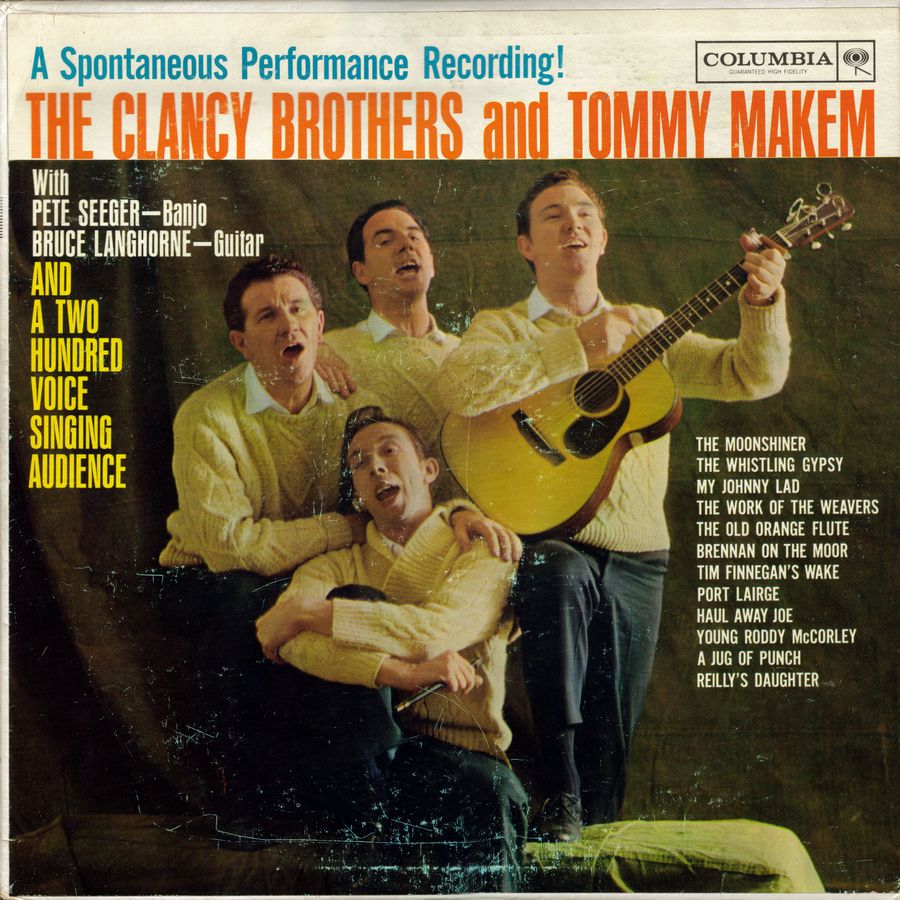
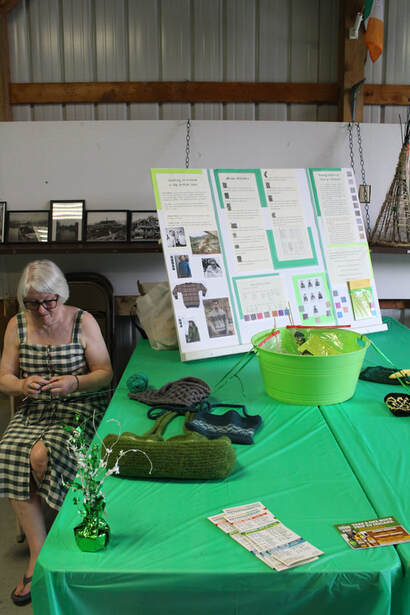
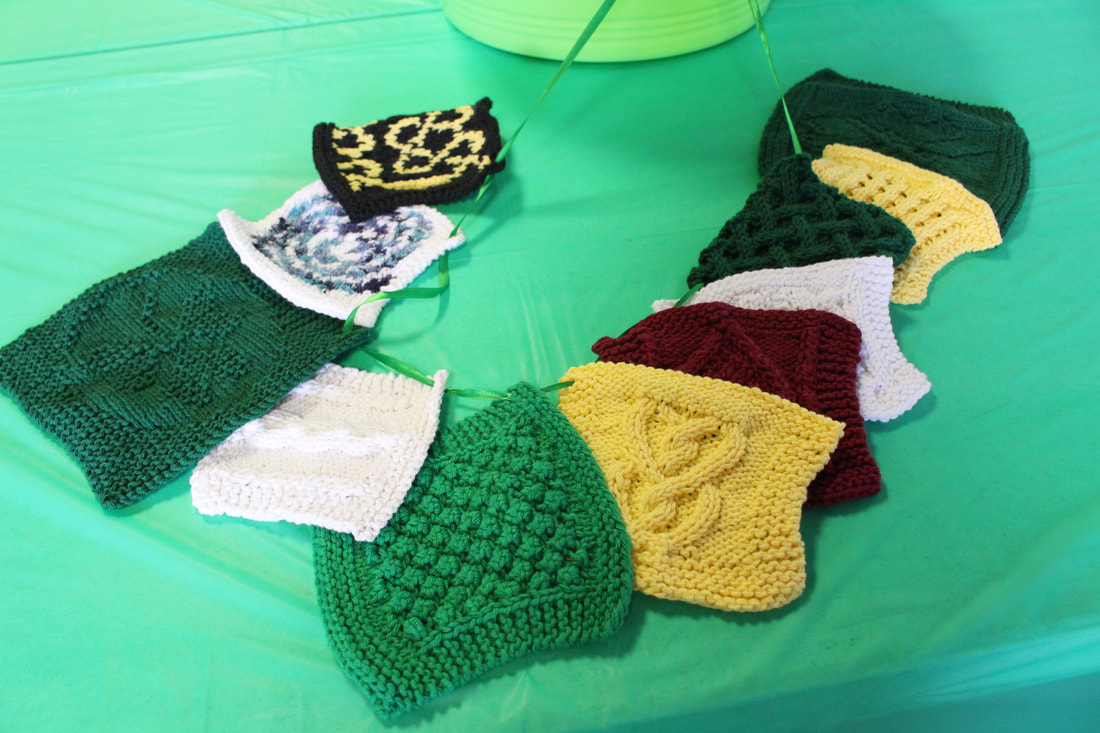
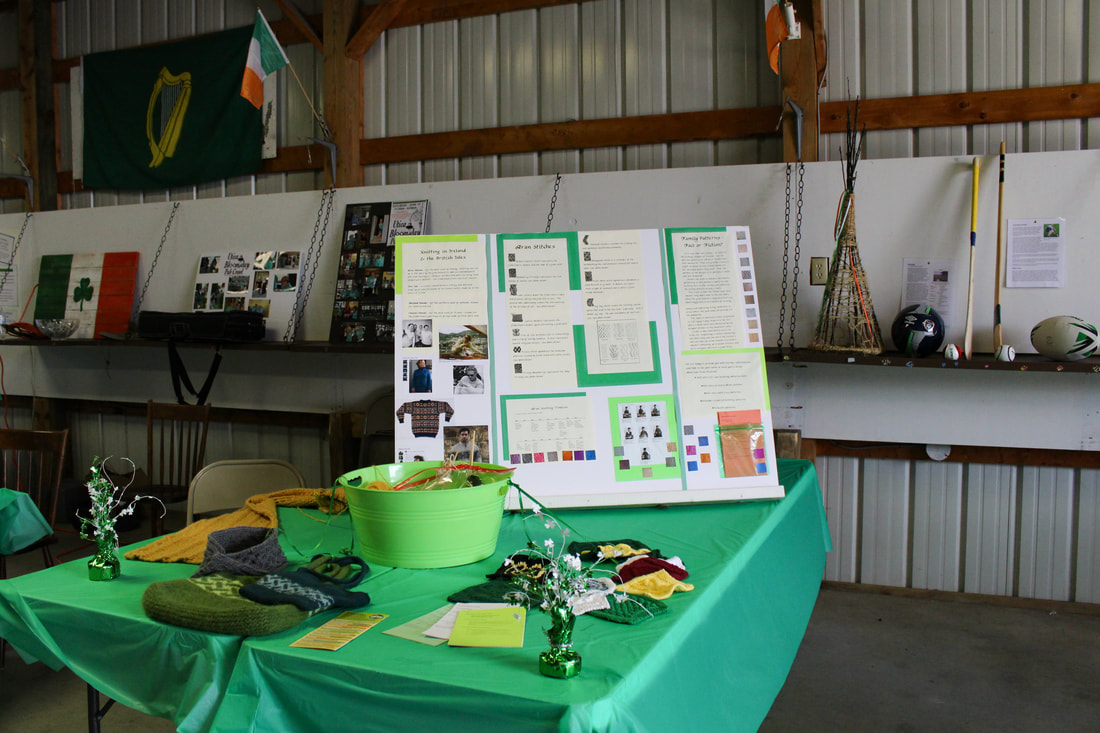
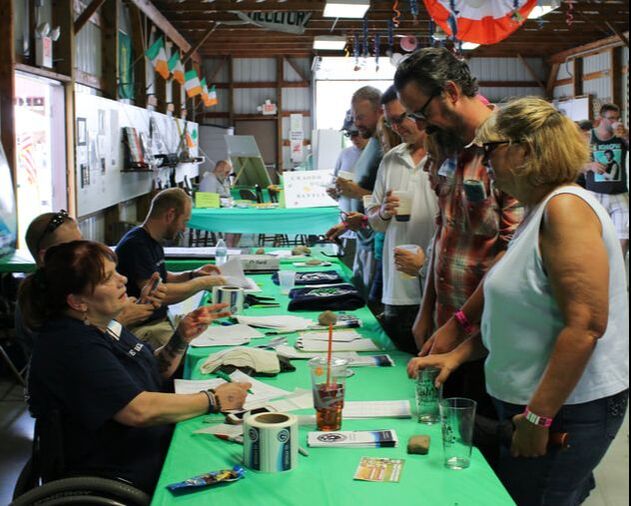
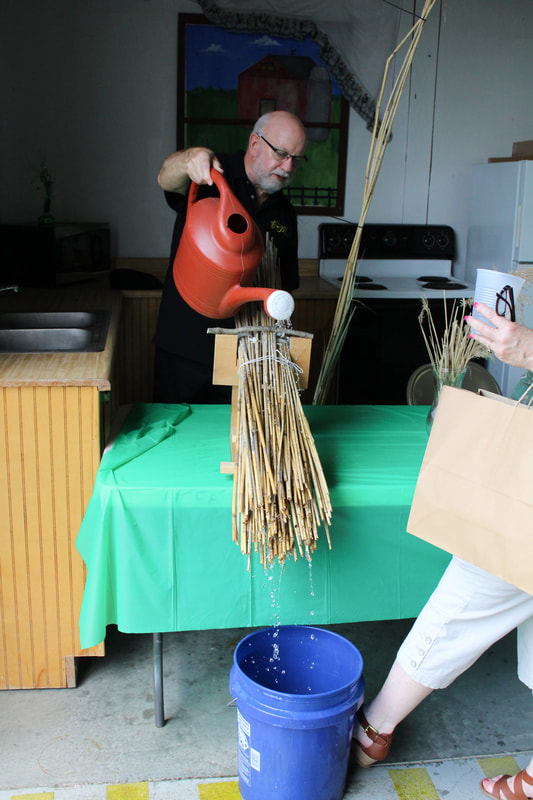
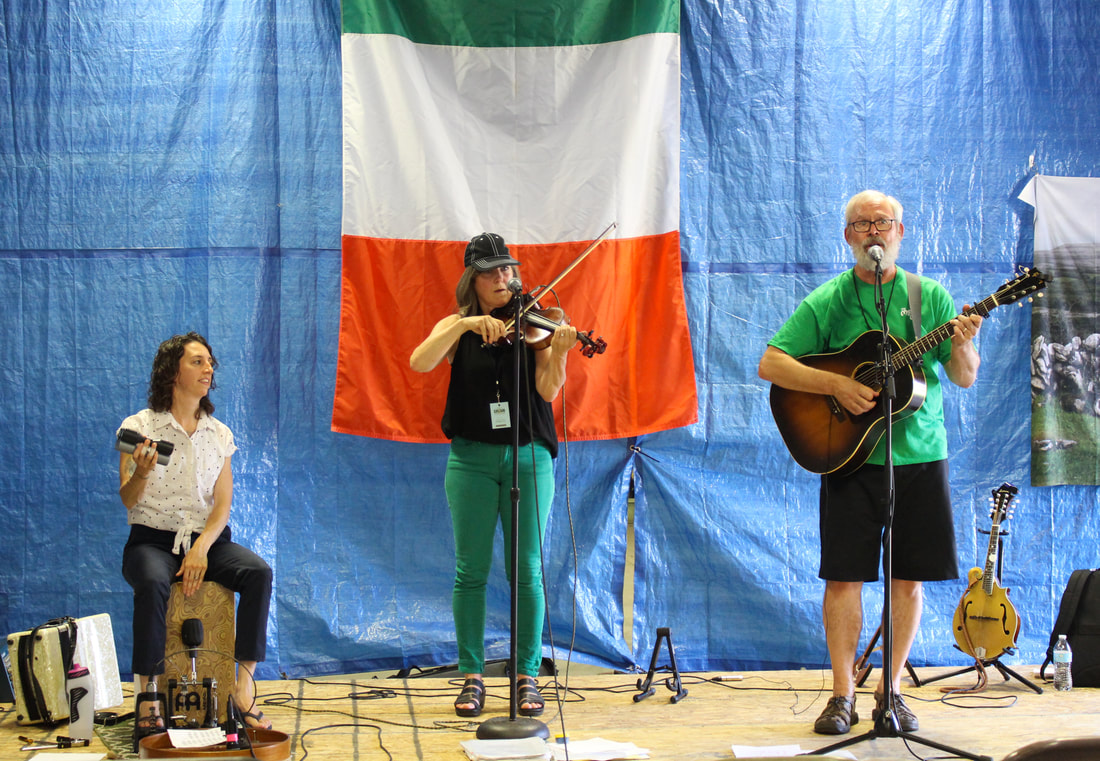
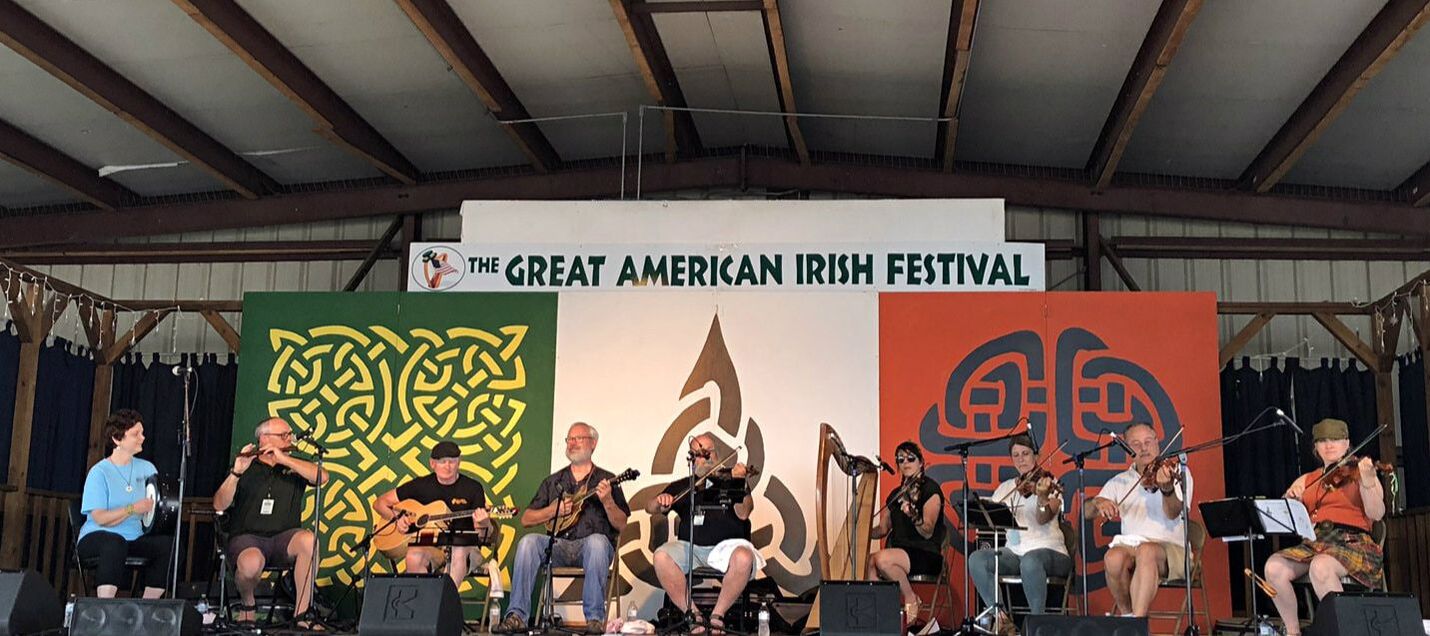
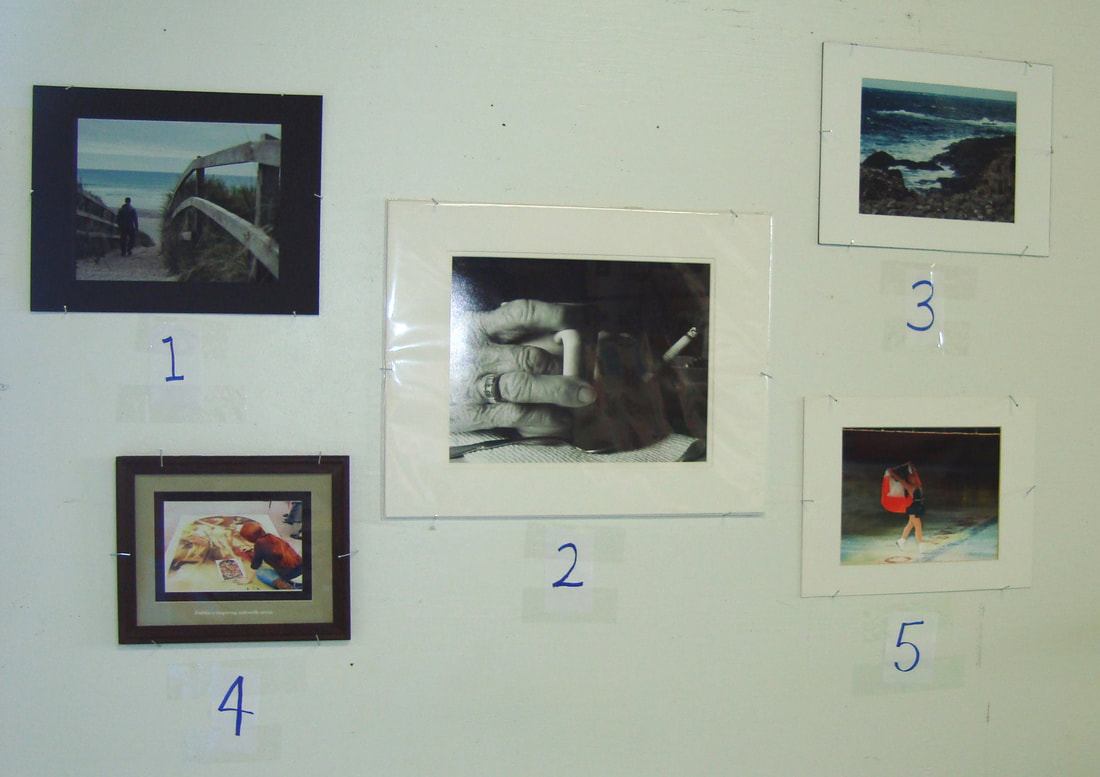
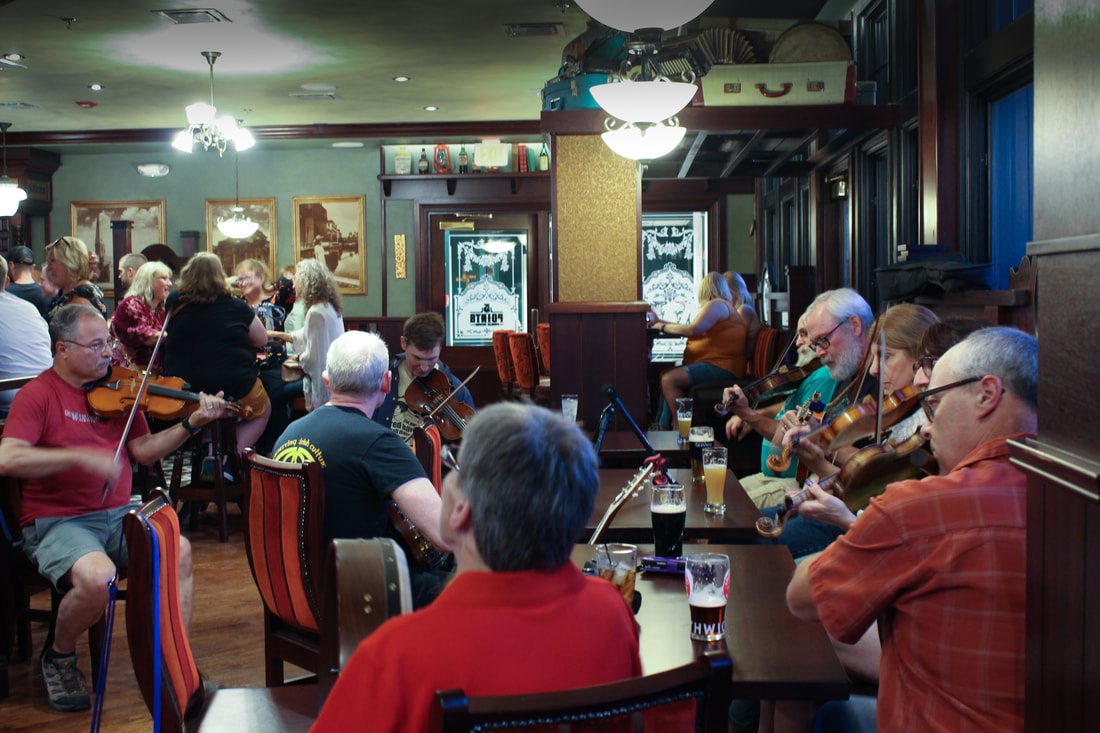
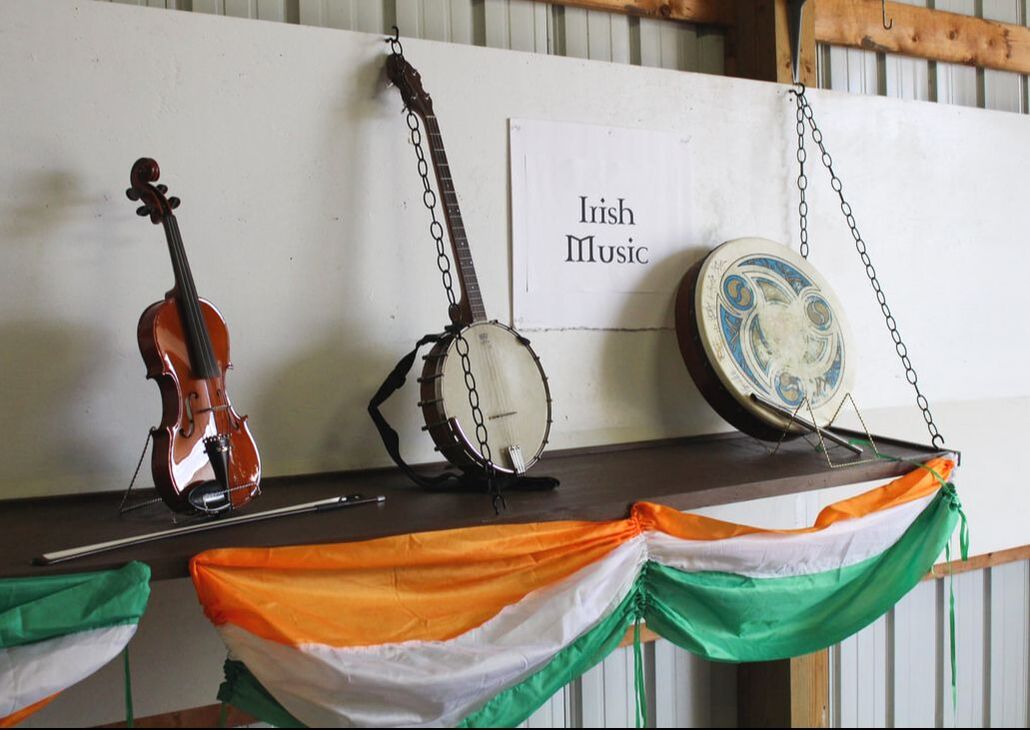
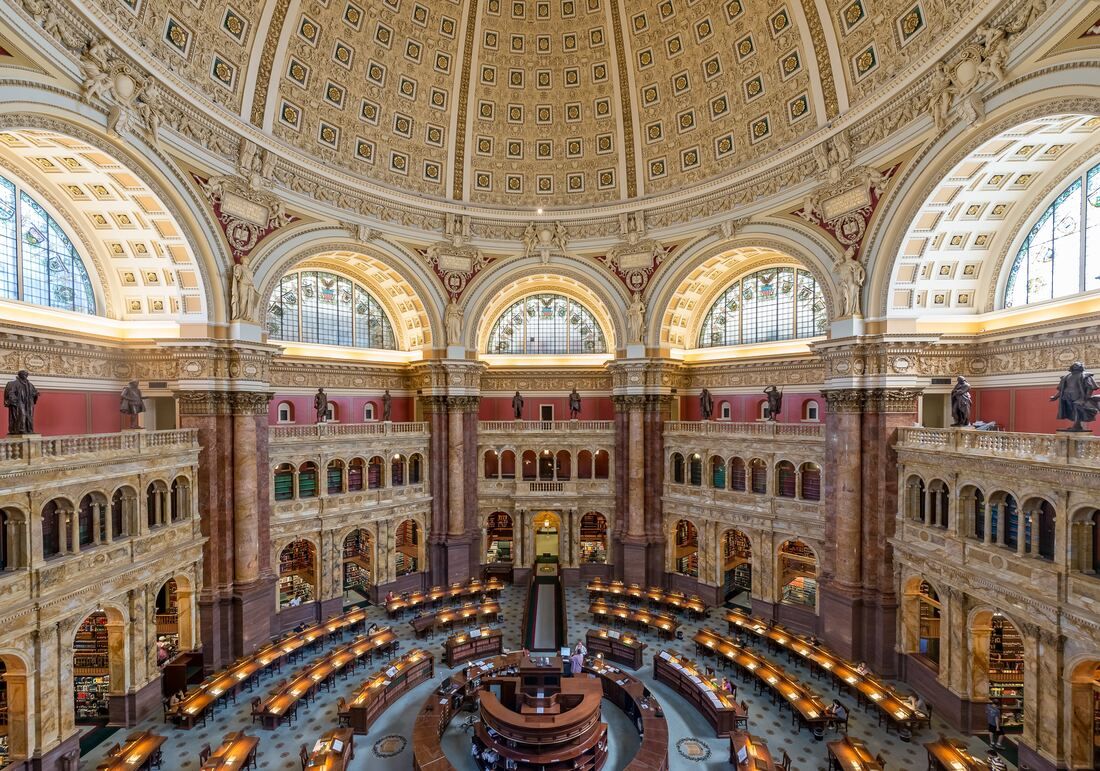
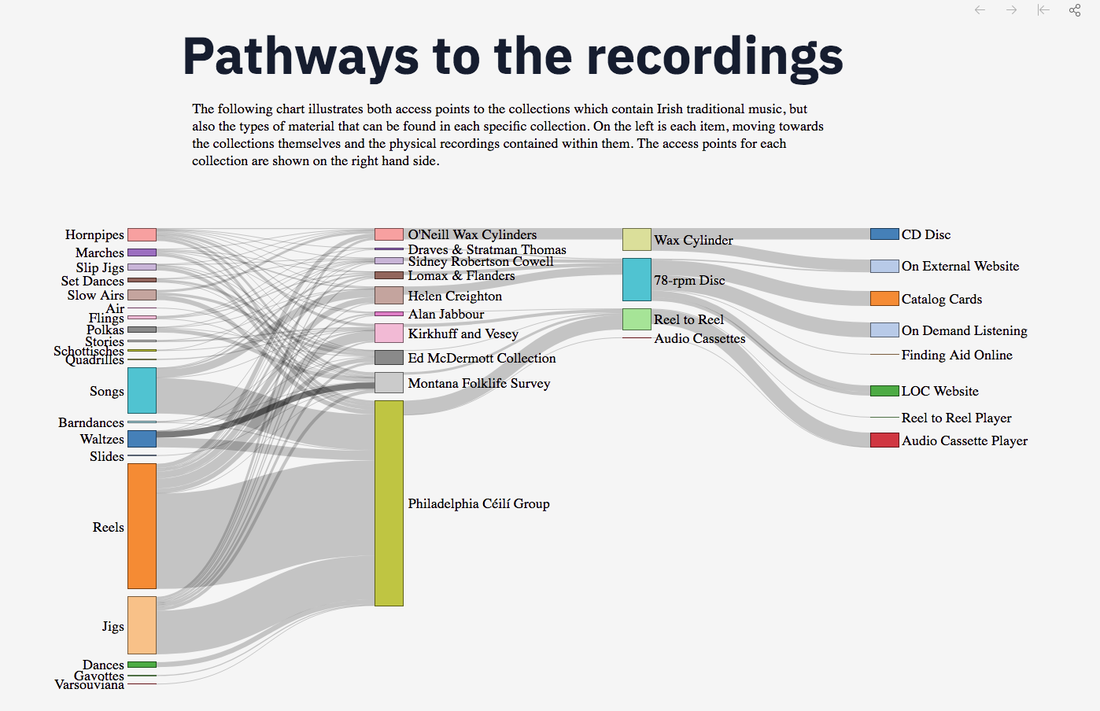
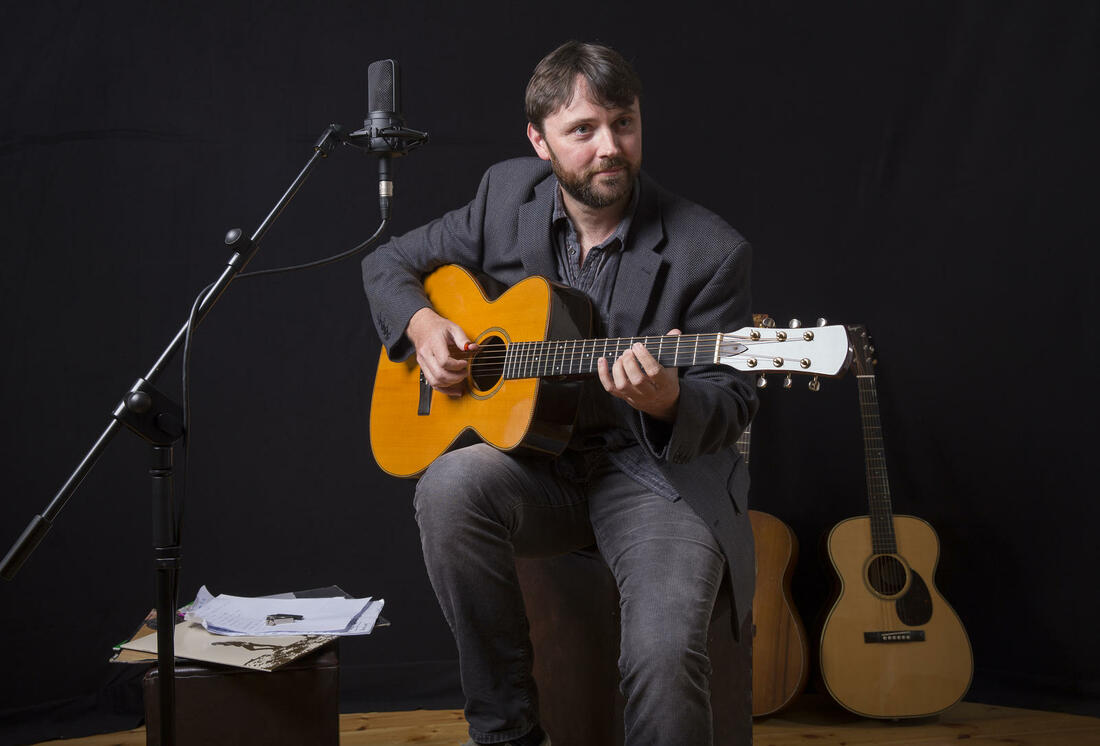
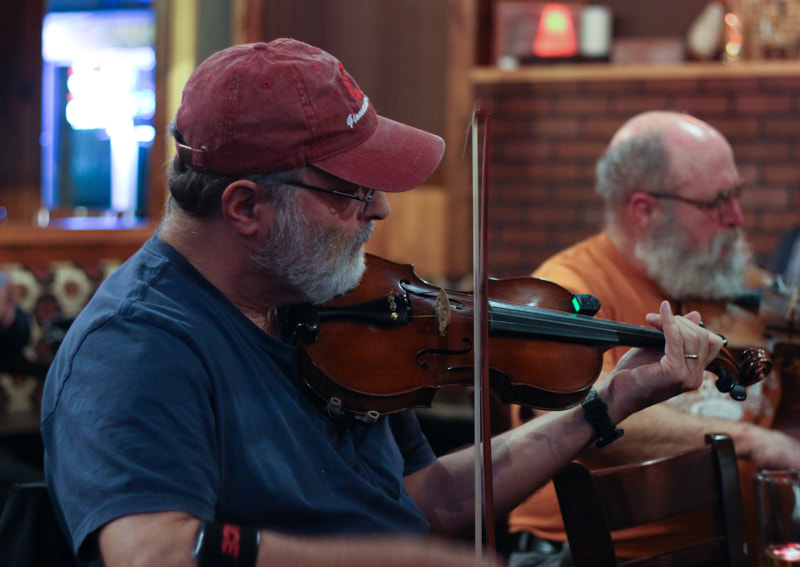
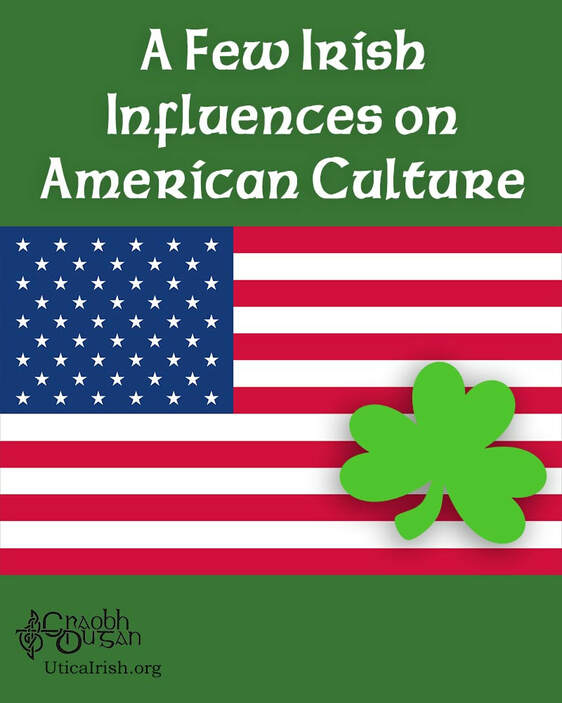
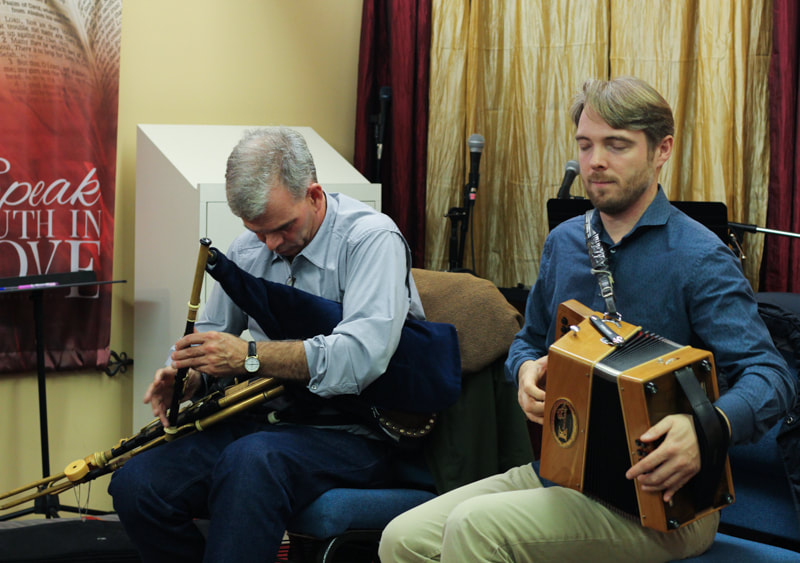
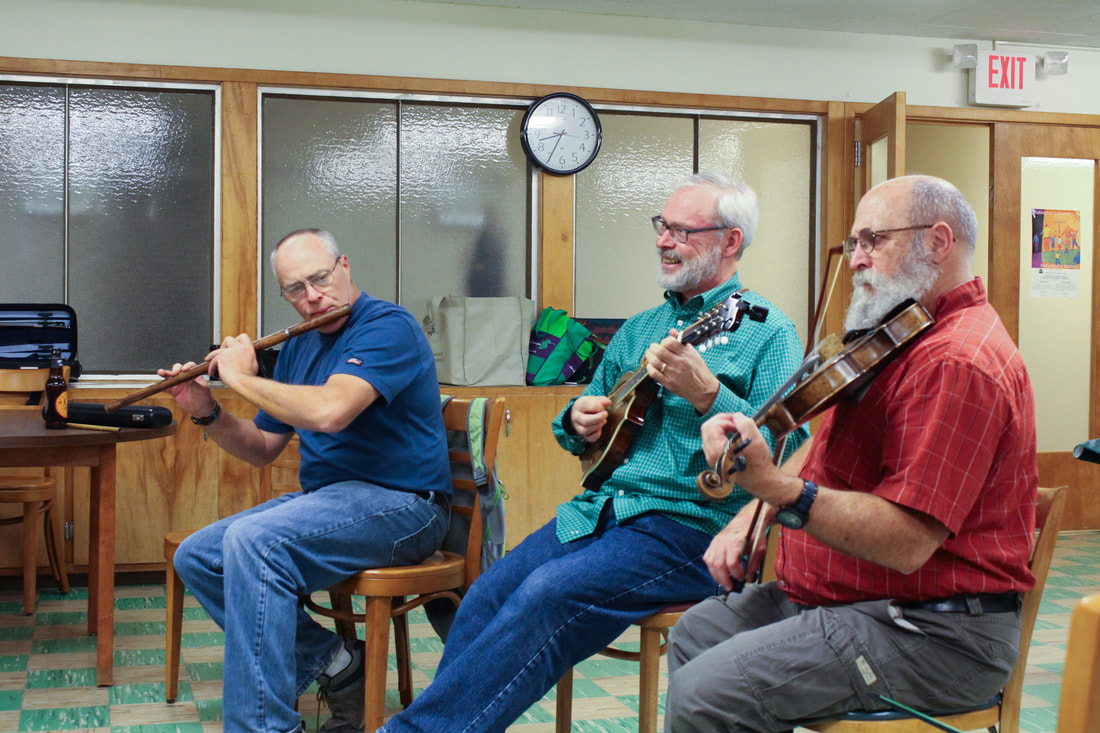
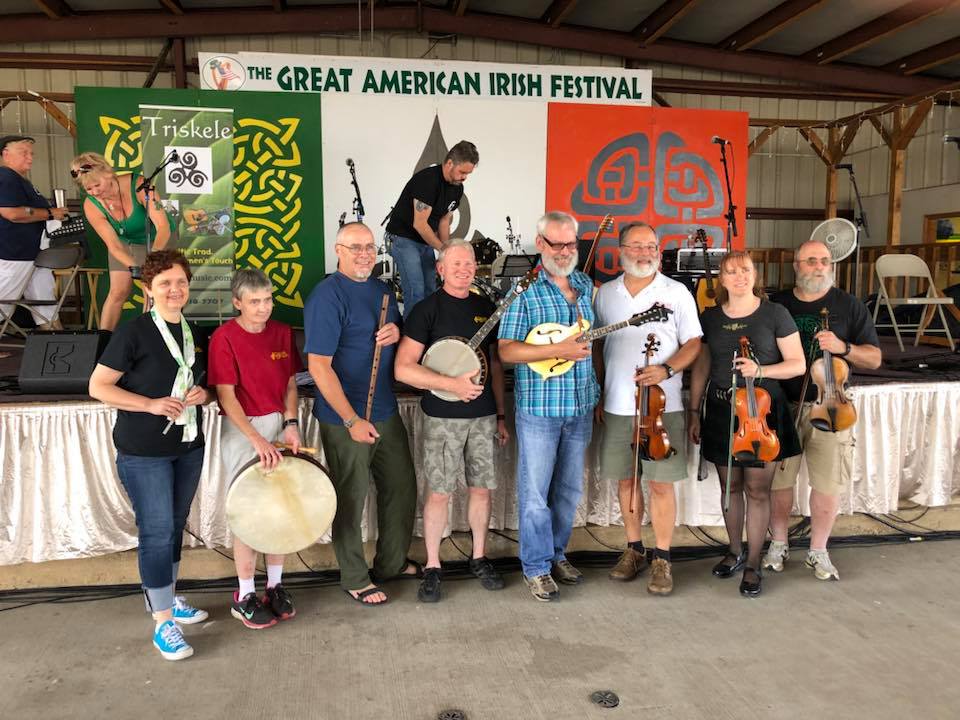
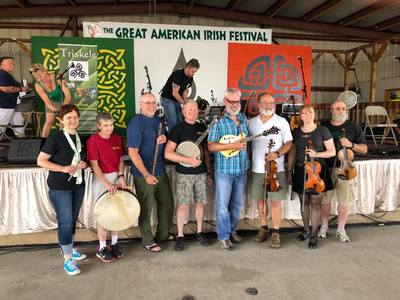
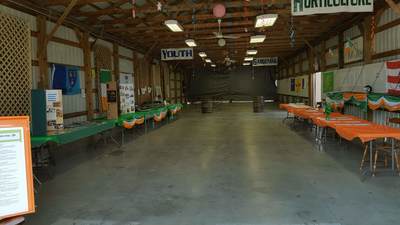
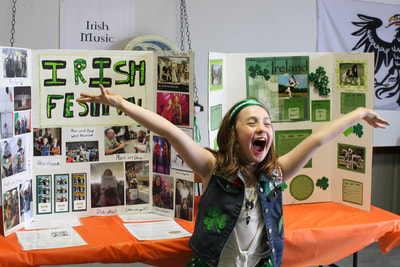
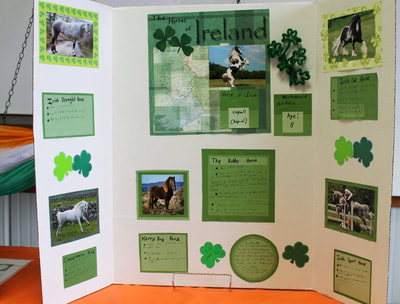
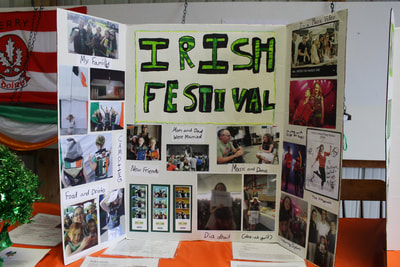
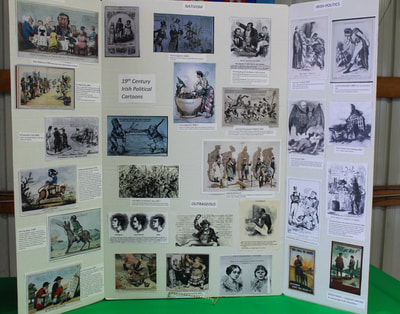
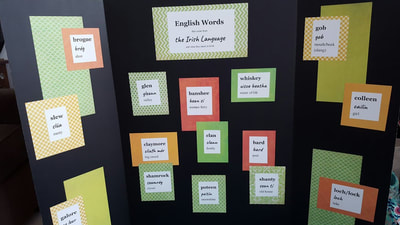
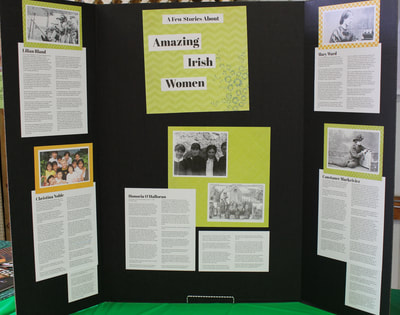
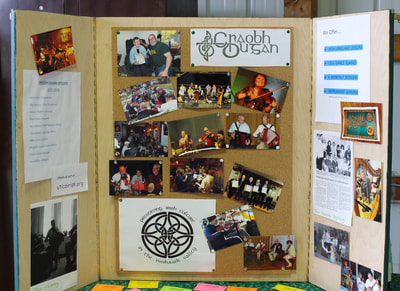
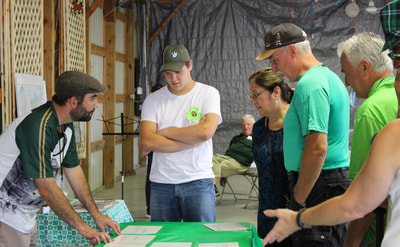
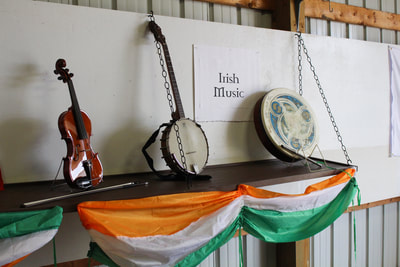
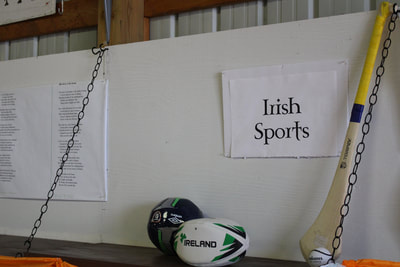
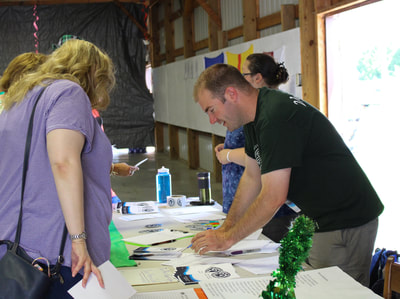
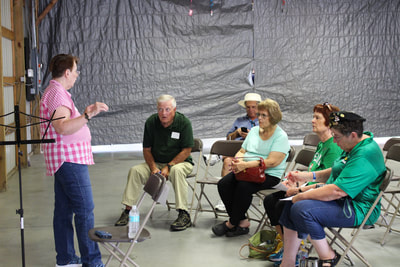
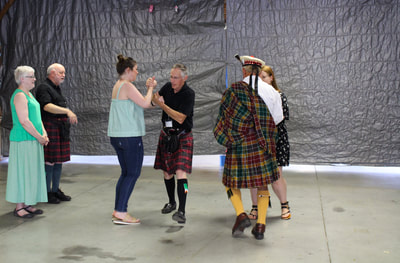
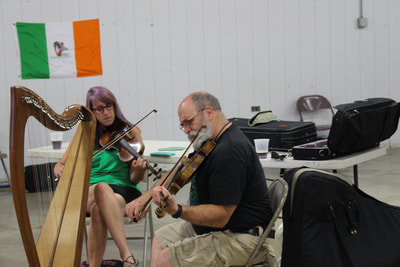
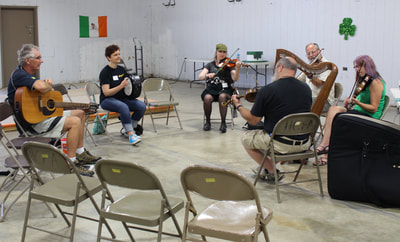
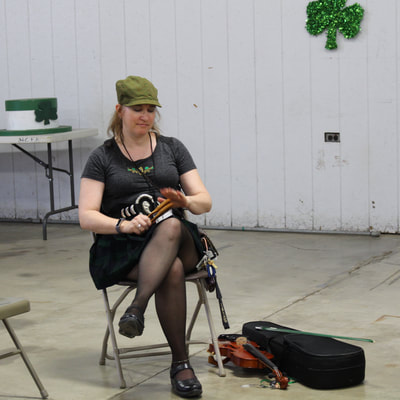
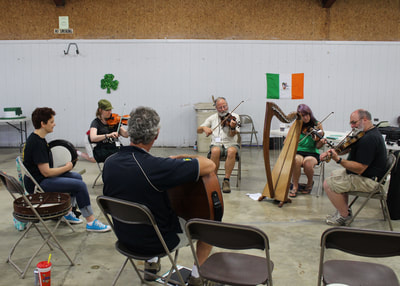
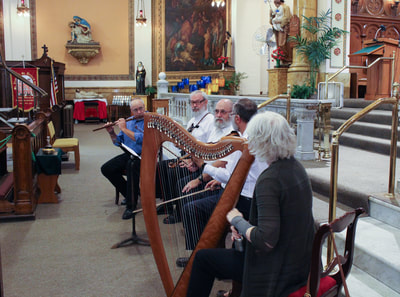
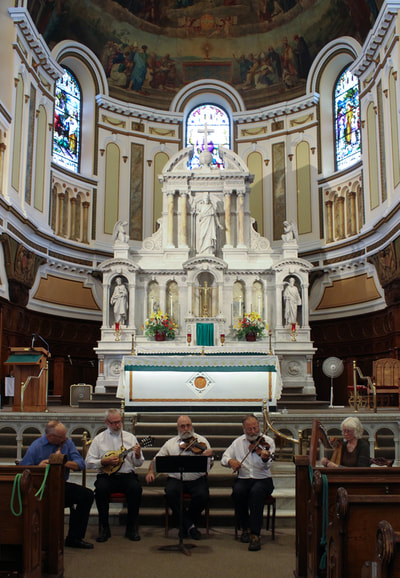
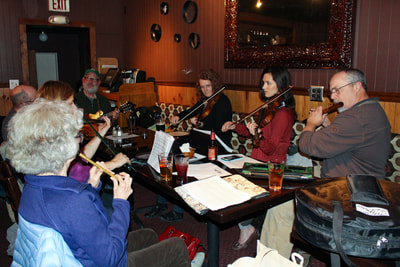
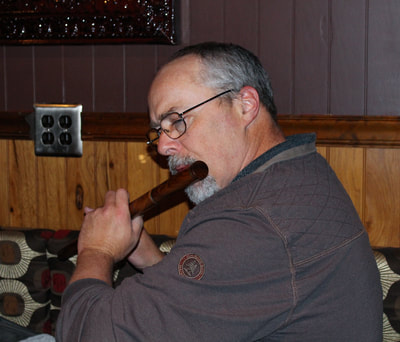
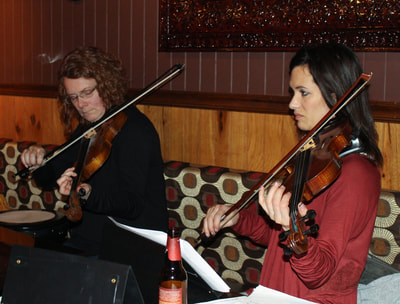
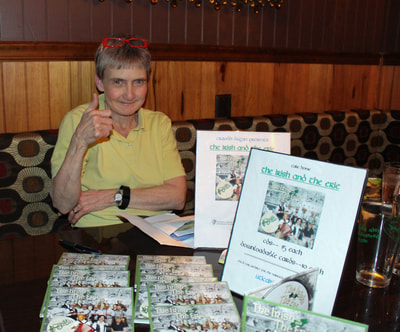
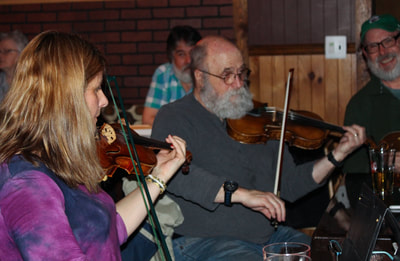
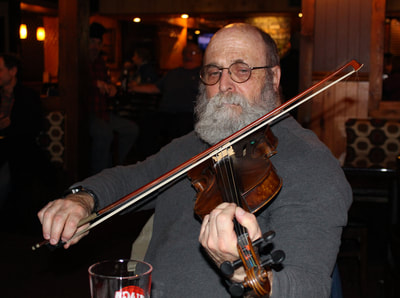
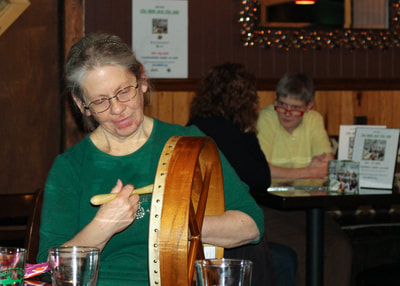
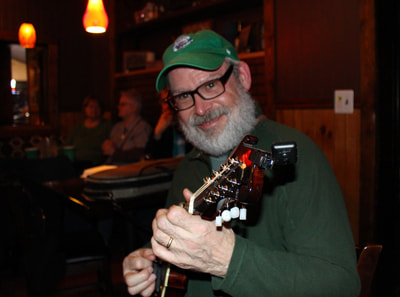
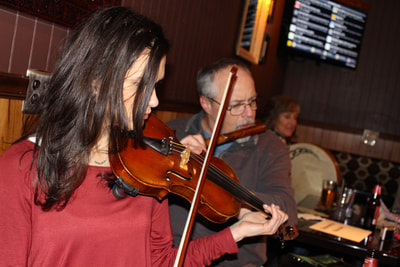
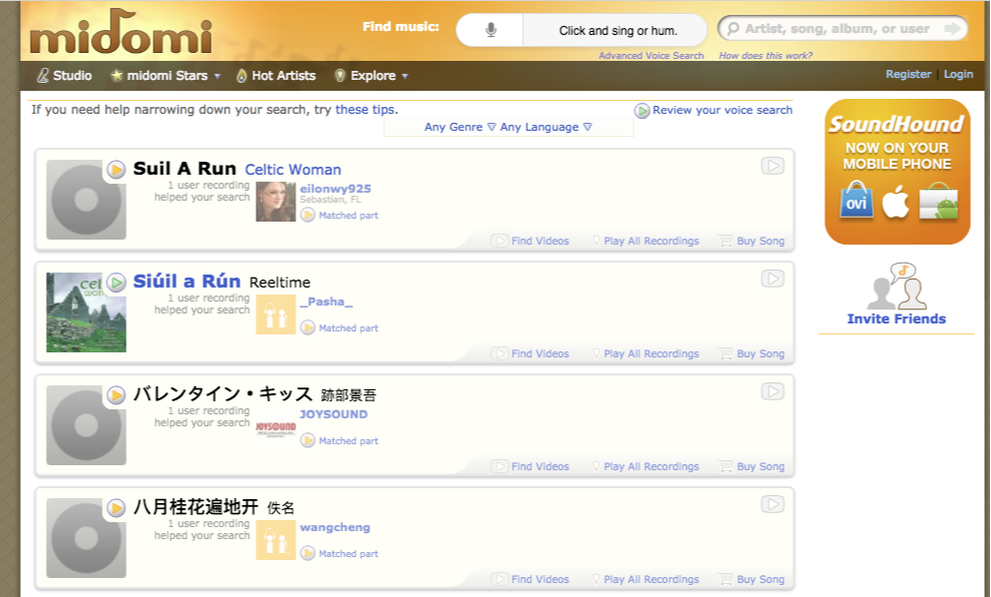
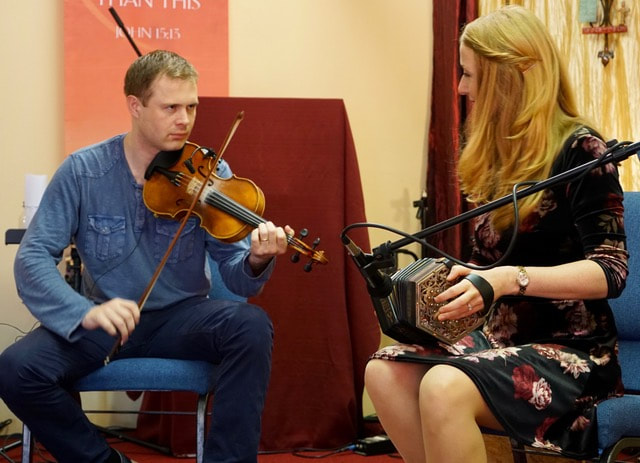
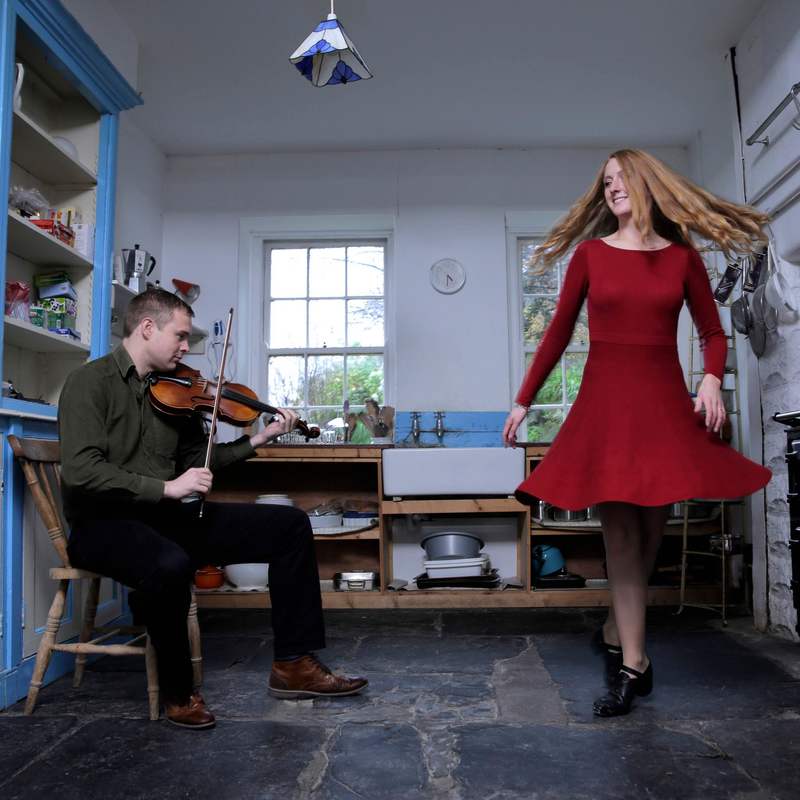
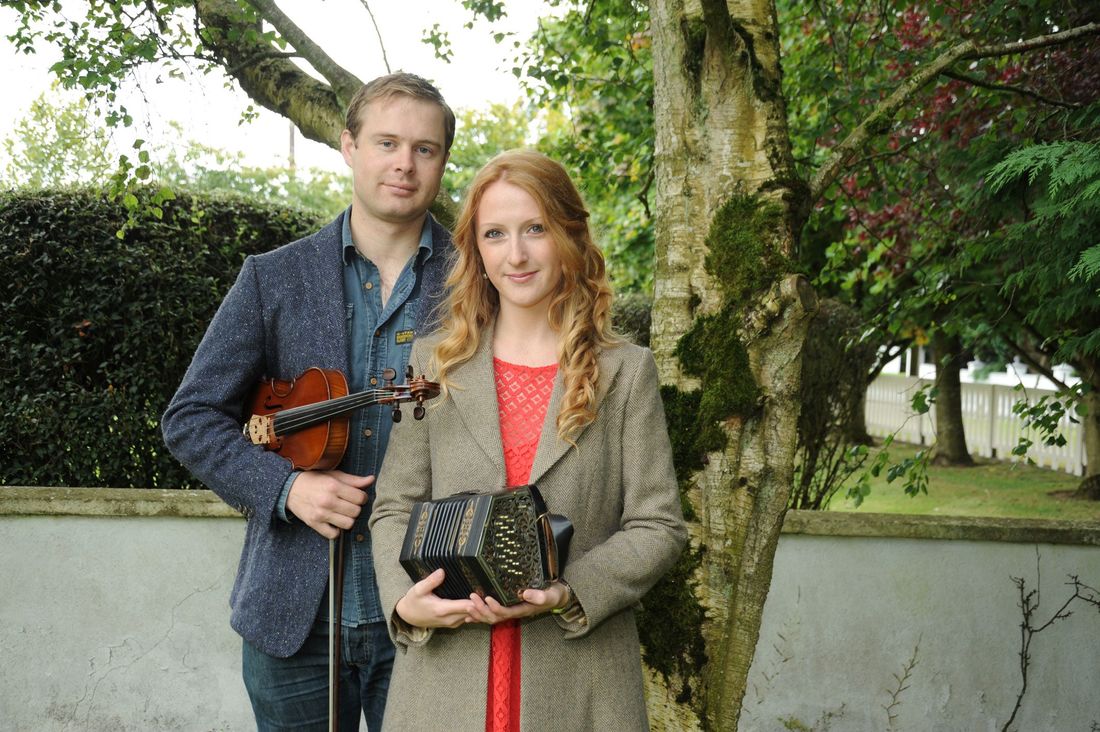
 RSS Feed
RSS Feed